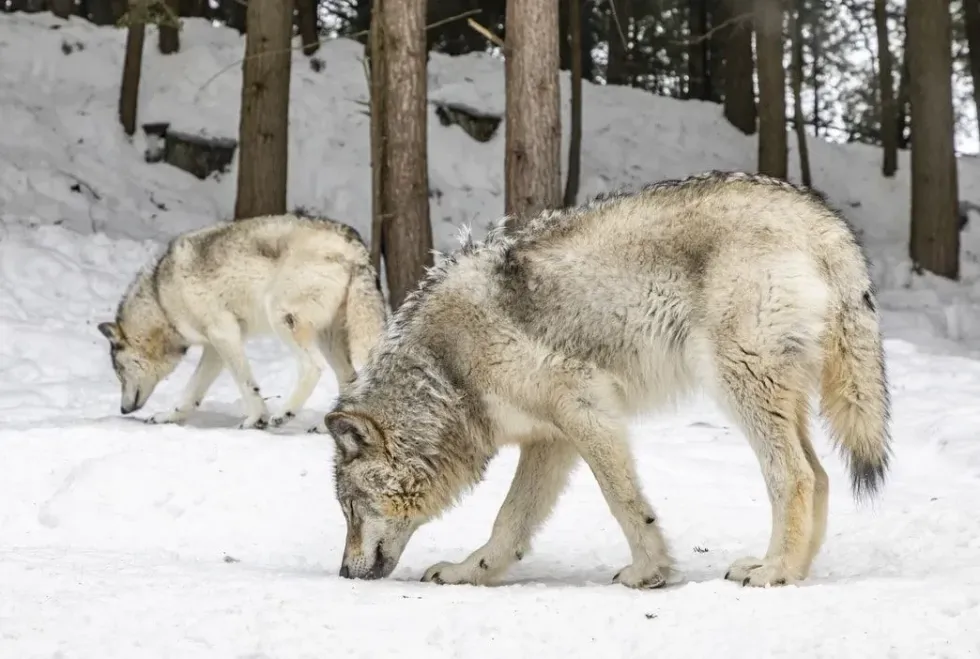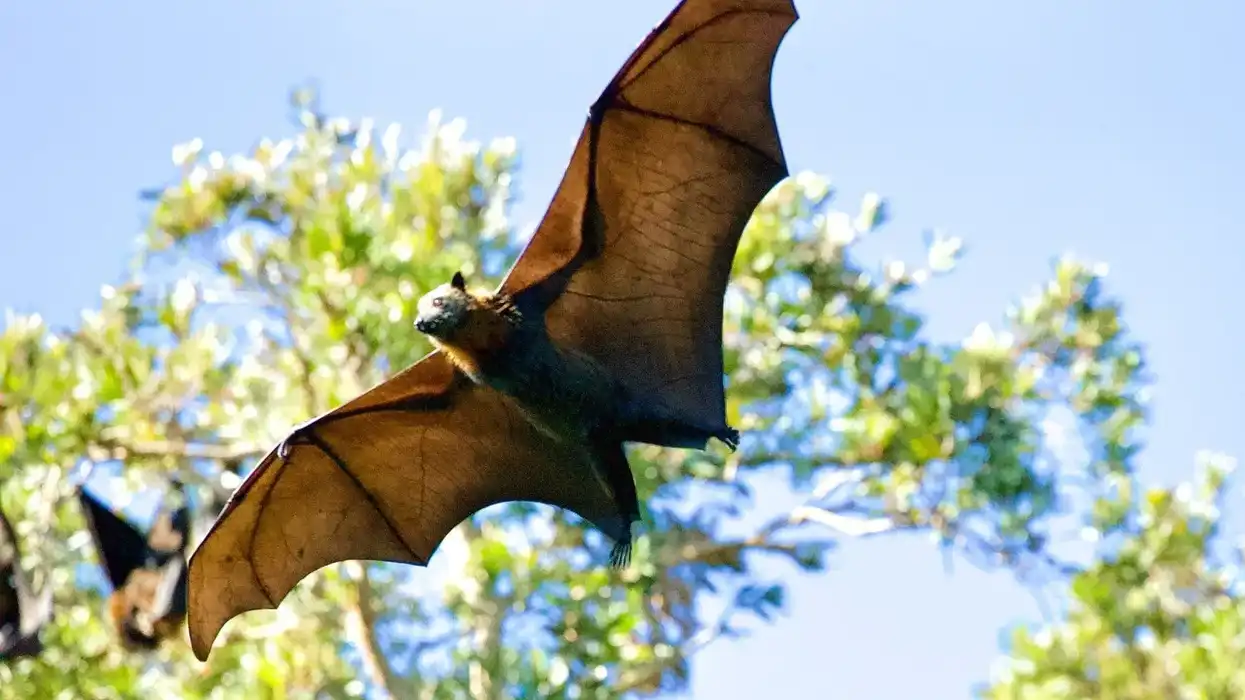Canis lupus occidentalis, also termed the northwestern wolf, is one of the largest wolves in North America. These species go by multiple names such as Canadian timber wolf, Alaskan timber wolf, Mackenzie valley wolf, rocky mountain wolf.
These wolves are found mainly in the parts of North America and inhabit forests and snowcapped rocky mountains. The average territory occupied by these species is around 3745.8-6458.3 sq. ft (348-600 sq.
m). They have a white, brown, bluish-colored thick fur coat with a straight tail and short ears. They also have a sharp sensation of vision, hearing, and smell and can run at a great speed of 39.7 mph (64 kph) while hunting and traveling.
They are social animals and resides in a pack of usually 6-12 members with a dominant couple and their young. These clever, daunting wolves generally hunt the prey by harmonizing a stampede that causes the immature and fragile members of the herd to fall behind for an easier takedown.
Read on to know more about this gray wolf subspecies.
If you like this article, check out pine marten facts and rock hyrax facts.
Northwestern Wolf Interesting Facts
What type of animal is a northwestern wolf?
Northwestern wolf is a type of wolf.
What class of animal does a northwestern wolf belong to?
The northwestern wolf belongs to the class of Mammalia of the family Canidae.
How many northwestern wolves are there in the world?
The exact number of northwestern wolves is Not Listed by the IUCN Red List. Although, in Alaska, the population of the Mackenzie Valley wolf was estimated between 7,000 to 10,000 in the year 2006.
The population of these species is on an increasing trend so the U.S.Fish and Wildlife Service has decided to remove the grey wolf from the federal endangered list.
Where does a northwestern wolf live?
The northwestern wolf is found mostly in parts of North America like Canada and the United States.
What is a northwestern wolf's habitat?
The northwestern wolf inhabits forests such as the temperate broadleaf and mixed coniferous forest, temperate coniferous forest, and rocky mountains covered with ice. Their range starts from Alaska in the upper Mackenzie River Valley (hence the species is also known as Mackenzie valley wolf) to the southern portions as well of Canadian provinces as well as the United States.
They were brought from Canada to restore populations in Yellowstone National Park and Central Park, in 1995.
Who do northwestern wolves live with?
Northwestern wolf, also known as the Mackenzie wolves lives in a pack. A pack usually consists of 6-12 family members, a commanding pair, their young and older broods.
How long does a northwestern wolf live?
The average lifespan of northwestern wolves is between six and eight years. The wolves in captivity can survive up to 17 years.
How do they reproduce?
The mating behavior of these species is monogamous in nature. Only a dominant or alpha pair mates within a pack, producing a single litter of pups.
The breeding season sets in early January and continues till late February. After a gestation period of 63 days, the females give birth to between four and six pups in a den which is usually located in a rock crevice or in a hole dug by them.
The whelps are born blind and deaf and start hearing after two weeks. Almost after 50 days, the pups leave their den and start exploring the nearby territory.
As the pups start to grow, the entire pack moves to much open space within the territory. By eight months they reach adult size and become capable of hunting and traveling with the pack and become sexually mature by 22 months.
What is their conservation status?
This species is not listed with the International Union for Conservation of Nature (IUCN) Red List, although other sources state that protection towards these wolves from poaching, trapping, and securing their natural habitat can make the population steady or can even increase.
Northwestern Wolf Fun Facts
What do northwestern wolves look like?

Canis lupus occidentalis, the Mackenzie wolf is a subspecies of gray wolf that is found in North America. The coat of these species is fluffy and can be of different colors such as gray, black, white, or even blueish.
The ears are estimated roughly at two inches and the eyes glow in the dark like most wolves. They have typically long, bushy, and straight tails but never curled, unlike the other wolves.
How cute are they?
The rich fluffy coat of these wolves gives them a royal look making them more handsome than cute. If you are a fan of huskies, you'll surely adore them.
How do they communicate?
The communication within the pack of the Alaskan timber wolf or Canadian timber wolf is done by establishing command using their body language. Through different vocalizations, body postures, and scent-marking, the hierarchy is maintained in the pack.
The commanding couple is in charge of the entire pack.
They keep their tail high and stand tall in order to show dominance while the other wolves within the pack show submissive behavior by keeping their tail down and lowering their bodies. During the full moon night, these wolves usually howl in the lighter nights, they do not have a habit of howling at the moon.
How big is a northwestern wolf?
Northwestern Wolves are around 13-35 in (33-88.9 cm) long. It is quite small compared to the Arctic gray wolf, which is 36-60 in (91.4-152.4 cm) in length.
How fast can a northwestern wolf move?
Northwestern wolves move at a high speed of 39.7 mph (64 kph). During their hunt or traveling, these species can move at around 5 mph (8 kph) at a stretch within their territory. A wolf pack can even cover a distance of 40 miles within around 10 hours for hunting during the winter season.
How much does a northwestern wolf weigh?
The male northwestern wolf weighs around 124 lb (56.2 kg) whereas a female northwestern wolf weighs around 94 lb (42.6 kg). The northwestern wolf size is heftier than the other subspecies of wolves. Also, the northwestern wolf's height is around 30 in (76.2 cm).
What are the male and female names of the species?
The male and female of the northwestern wolf are known as a dog and a bitch respectively.
What would you call a baby northwestern wolf?
A baby northwestern wolf is called a whelp or a pup.
What do they eat?
The northwestern wolf (Canis lupus occidentalis) is a carnivorous animal. They feed on a variety of hoofed mammals or rodents such as mountain goats, elk, bison, deer, caribou sheep, and moose. They also prey on voles, salmon, lemmings, and beavers.
Are they poisonous?
Northwestern wolves are not poisonous.
Would they make a good pet?
The subspecies of a gray wolf can be kept as a pet as they are not dangerous towards humans.
Did you know...
The northwestern wolf, or Canadian timber wolf, has particularly hefty limbs and huge lungs adapted for breathing at higher altitudes, which permits them the right to establish a monarchy in their natural habitat.
The largest northwestern wolf pack ever recorded was 37 wolves.
In 1939, the heaviest rocky mountain wolf (Alaskan timberwolf) on record was founded in Alaska weighing 175 lb.
An extinct subspecies of gray wolves is the Kenai Peninsula wolf.
Are northwestern wolves endangered?
The northwestern wolf (Canis lupus occidentalis) is not endangered as they are being given protection from poaching. Their population is on an increasing trend since then.
Here at Kidadl, we have carefully created lots of interesting family-friendly animal facts for everyone to discover! Learn more about some other mammals from our shrew facts and Masai giraffe facts pages.
You can even occupy yourself at home by coloring in one of our free printable northwestern wolf coloring pages.









